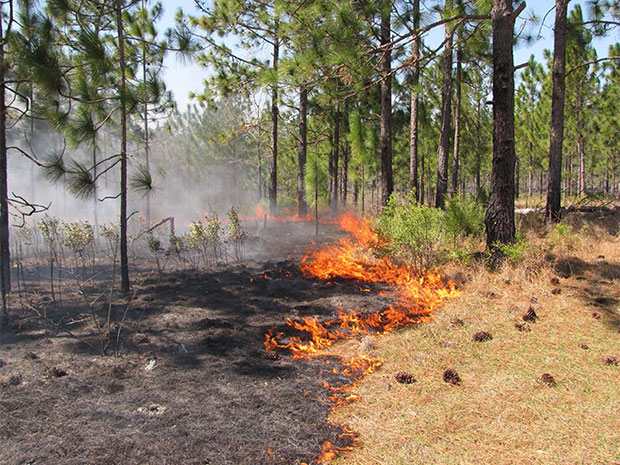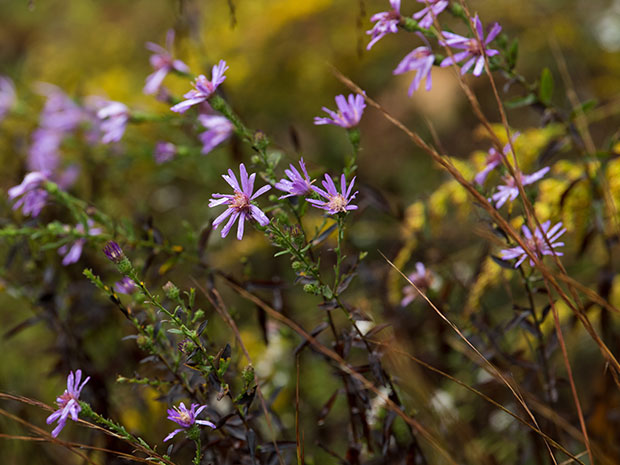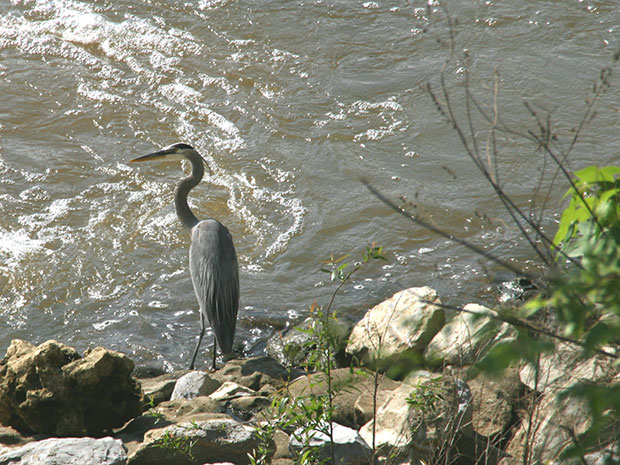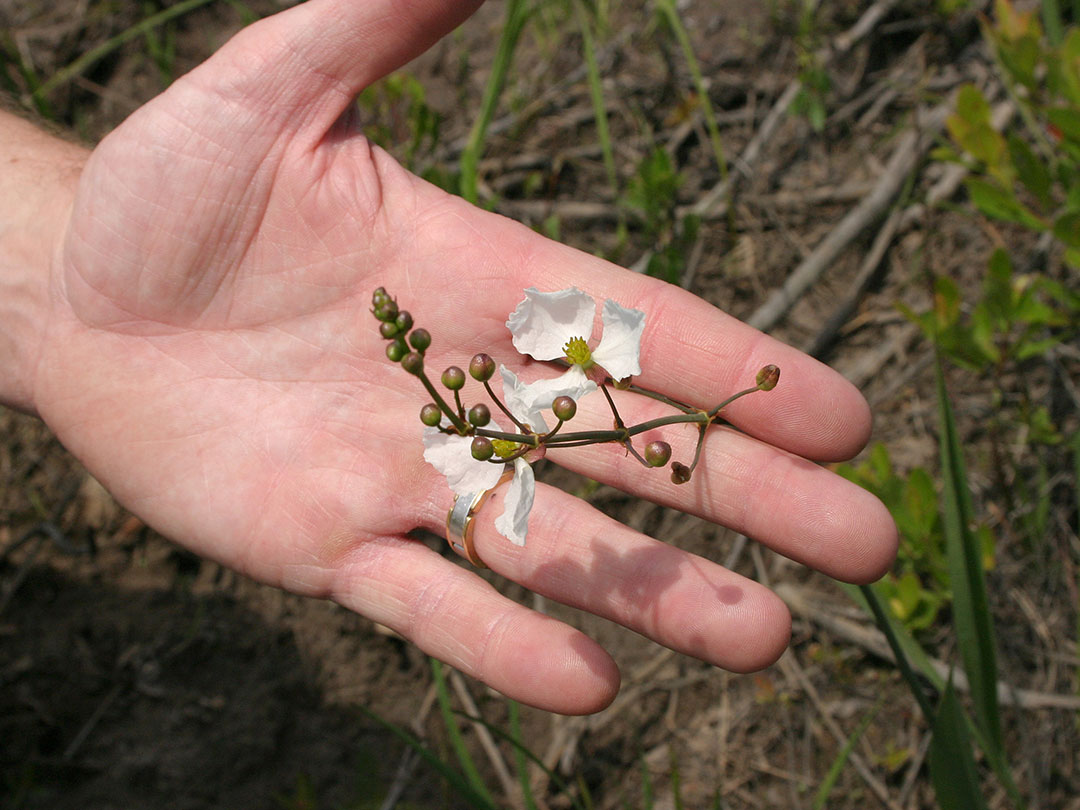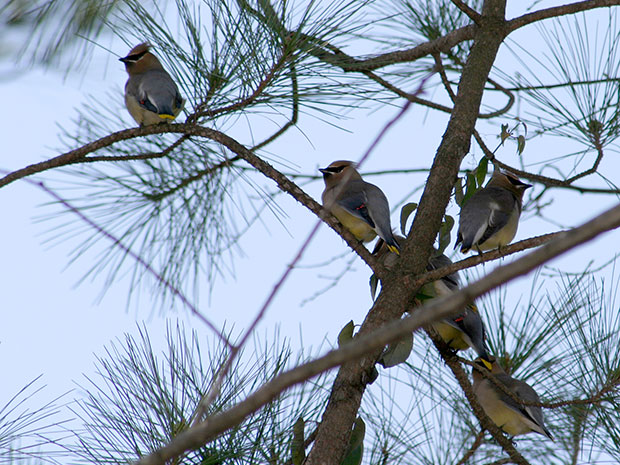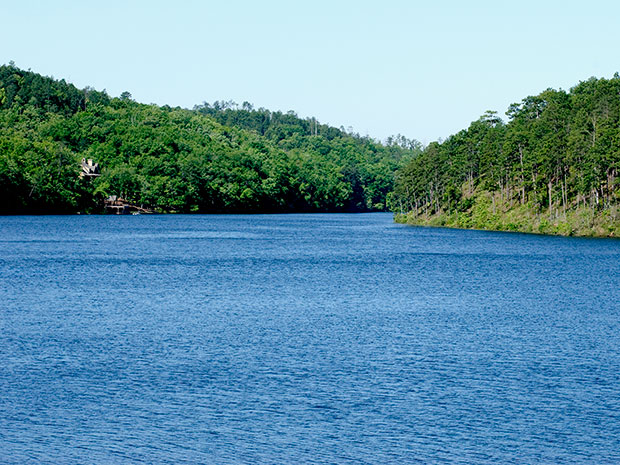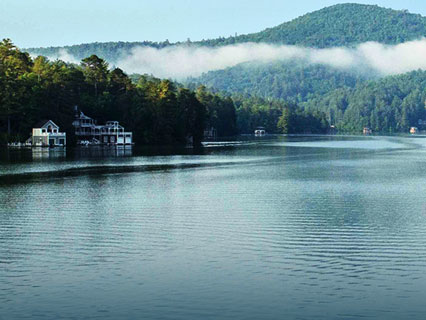Conserving our Environment
Beyond the intrinsic value of biodiversity, a balanced and healthy ecosystem is integral to our commitment to provide clean, safe, reliable, and affordable energy to our customers.
We practice conservation and promote biodiversity on our own land and in partnership with others through our stewardship programs.
Southern Company's electric subsidiaries manage:
120,000 acres
45 percent of forest lands through leases to recreation groups or states as Wildlife Managment Areas and parks.
200,000+ acres
Of lakes and 5,000 miles of shoreline in Alabama and Georgia to provide renewable power flood control irrigation, drinking water, fish and wildlife habitats, and recreation associated with our hydroelectric plants.
60+ percent
Of our rights of way through integrated vegetations management practices to reduce herbicides, promote healthy ecosystems, and increase species diversity.
100,000 acres
Of rights of way through programs to promote native vegetation suitable for wildlife.
The Southern Company system is the largest non-government provider of recreation facilities in Alabama and Georgia. We opened nearly 38,000 acres of land for public use that are now operated by state conservation and natural resources agencies as Wildlife Management Areas. In managing lakes, shorelines, and natural areas, we balance generation, environmental and economic factors.
Lakes and Recreation
Alabama Power Shoreline Management Helps Protect Endangered Species
Coosa River Bypass Restores Biodiversity to Certain Stretches of The River
Some 31 lakes lie behind our hydroelectric plants, which provide renewable power, flood control, irrigation, drinking water, fish and wildlife habitats and recreation on more than 200,000 acres of lakes and 5,000 miles of shoreline in Alabama and Georgia. Shorelines also bolster local economies serving boaters, fishermen, homeowners, hotels and parks.
In addition to recreational activities like swimming, fishing and boating on the lakes themselves, picturesque nearby areas have hiking trails, picnic areas and campgrounds — many of which are accessible to people with physical disabilities.
As hydroelectric plant licenses come up for renewal, we conduct an extensive process that addresses power generation, natural resources, recreation and aesthetics at the sites. The relicensing process engages federal, state and local resource agencies, non-governmental organizations, citizens' groups, Native American tribes and other stakeholders.
From an ecological standpoint, we compile and release biological assessments for threatened and endangered species. The reports propose actions we take to support biodiversity by protecting species of concern—and in some instances, enhancing habitats—in the watershed of the proposed project.
Forests
Crawling Home to Georgia
Protecting Red Cockaded Woodpeckers in Alabama's Longleaf Pine Forests
Forests offer bountiful wildlife habitats, provide beautiful areas for outdoor recreation, and even create jobs. Our foresters and wildlife biologists manage more than 250,000 acres of forested land in Alabama and Georgia for timber production and to enhance habitat for game and non-game species.
Approximately 120,000 acres of our forestland is leased to hunting clubs or managed by states as Wildlife Management Areas and state parks, offering hunting, fishing, canoeing, bike riding, archery, camping, hiking and bird watching. Many areas have nature trails with interpretive signs about the forest. We also have three areas dedicated to handicap-only hunting.
Several federally listed, and many state-listed, threatened or endangered species inhabit the land we own, including the Red-cockaded woodpecker, gopher tortoise and American bald eagle. Our foresters follow federal and state laws and guidelines to protect these species and their habitat and help states survey plant and animal species.
- Alabama Power manages roughly 1,500 acres of longleaf pine forest at Lake Mitchell for 12 active clusters of the endangered red-cockaded woodpecker under a Safe Harbor agreement and RCW Management Plan.
- Georgia Power and Southern Nuclear signed a Safe Harbor agreement in 2007 with the Georgia Department of Natural Resources (DNR) to manage approximately 1,800 acres at its two nuclear sites for Red-cockaded woodpecker and other longleaf-dependent species, such as the gopher tortoise.
- Georgia Power along with the Georgia Department of Natural Resources has agreed to create a refuge for displaced gopher tortoises on Company property in Burke County located near the Plant Vogtle nuclear site.
Rights-of-Way
An Unlikely Home
Planting Pollinators On Rights-of-Way in Georgia
Southern Company system foresters and employee volunteers manage the land surrounding our power plants and along our transmission rights of way to conserve native plants and wildlife habitats. We manage more than 300,000 acres of rights of way, more than 60 percent through integrated vegetation management, a program that reduces the need for pesticides, promotes healthy ecosystems, and can increase natural species diversity.
The Southern Company system has opened more than 100,000 acres of rights of way to native vegetation suitable for wildlife.
The Special Management Area program in Georgia protects, conserves, and restores rare plant species found in our rights of way. The number of sites has increased to 30, where Georgia Power biologists work with the State Botanical Gardens of Georgia and the Georgia Department of Natural Resources-Natural Heritage Program to conserve local plant species at 22 Georgia sites. Examples include the Georgia aster (Symphyotrichum georgianum), Mohr's Barbara button (Marshallia mohrii), Hairy rattleweed (Baptisia arachnifera), Smooth purple coneflower (Echinacea laevigata), and the Florida willow (Salix floridana), all of which are threatened or endangered at a federal or state level.
Certifications
Wildlife at Work
Controlling Feral Hog Populations at Alabama Power's Plant Farley
The Wildlife Habitat Council (WHC) helps landowners manage unused land for the benefit of wildlife. Employees of the Southern Company systems' three nuclear facilities, in conjunction with community members, local conservation groups, and government agencies, maintain certification with Wildlife Habitat Council through their Wildlife at Work program for nearly 5,400 acres of land. For details concerning the certified land management practices, employee participation projects, and community partnerships visit: Farley (PDF 3MB) | Hatch (PDF 1MB) | Vogtle (PDF 2MB)
Forestry for Wildlife Partnership Program promotes habitat diversity. Georgia Power is a charter member, maintaining certification since 1999. In partnership with the Georgia Department of Natural Resources' Wildlife Resources Division, our foresters, wildlife biologists, and others manage timber and wildlife habitats tract by tract—approximately 82,000 acres of land throughout Georgia. We've received the Forestry for Wildlife Partnership award from the DNR for managing our land to benefit wildlife. For details, visit Georgia Department of Natural Resources.

